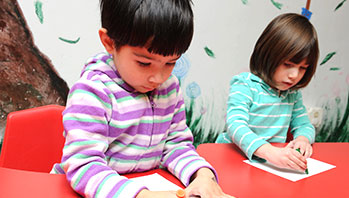- crayons
- marker
- paper
- “Plants All Around” chart
- science notebooks
- plant
- record
- sprout
MA Standards:
English Language Arts/Writing/W.PK.MA.2: Use a combination of dictating and drawing to explain information about a topic.
MA Draft Standards:
Life Sciences/From Molecules to Organisms: Inheritance and Variation of Traits/LS1/3.D: Recognize stages of the life cycle of plants and animals they have observed and discuss ideas about what happens at each stage. [Patterns, Change]
Head Start Outcomes:
Science Knowledge/Conceptual Knowledge of Natural and Physical Worlds: Observes, describes, and discusses living things and natural processes.
Science Knowledge/Scientific Skills and Method: Collects, describes, and records information through discussions, drawings, maps, and charts.
PreK Learning Guidelines:
Science and Technology/Life Sciences 10: Observe and identify the characteristics and needs of living things: humans, animals, and plants.
Science and Technology/Inquiry Skills 4: Record observations and share ideas through simple forms of representation such as drawings.
Draw and Write Together: Updating Our Science Notebooks

© Commonwealth of Massachusetts, Department of Early Education and Care (Jennifer Waddell photographer). All rights reserved.
STEM Key Concepts: Plants grow in many places; Plants need water, food, and sunlight to live and grow; Draw to record observations
ELA Focus Skills: Concepts of Print, Listening and Speaking, Vocabulary
Display the “Plants All Around” chart and read the entries with children. Remind them that scientists record all observations and how things change or stay the same over time.
Hold up a bean and use the photos taken during explorations to discuss how the bean looked before being planted and how it has changed. Talk about today’s measuring experience. Then guide children to talk about what they want to put in their notebooks. Have them draw a picture and then dictate an entry to go in their notebooks, such as, “Day 5: Today we measured our plants. Some bean plants are taller than others. The grass is green and shaggy.”
As you write what children dictate, talk about where on the page you begin to write, the letters in the words you are writing, and the spaces you leave between words. Read the entry back to children and encourage them to read as many words as possible along with you.
Invite children to draw pictures of their plant-measuring activity. If they wish, compile their pictures into a group book with a title page “The Day We Measured Our Plants” and place it in the Library Center.
Social Emotional Tip: Help children see how they are an important part of the whole group by offering opportunities for them to partake in group activities and projects.
Social Emotional Tip: Help children develop an awareness of time and continuity by having them keep a journal.
